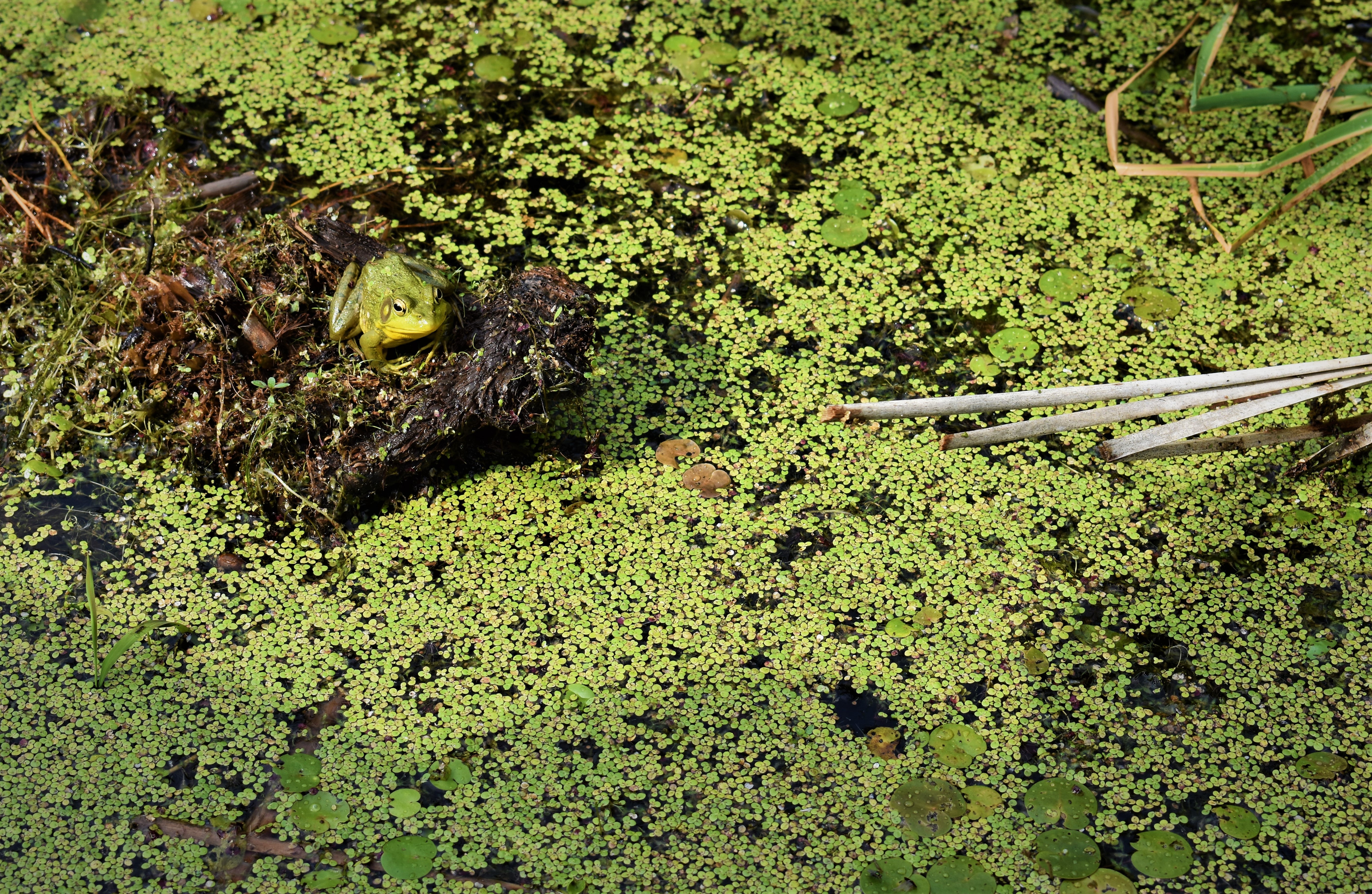Using plants and microorganisms to create sustainable ecosystems
Dawn Reinhold, associate professor in the MSU Department of Biosystems and Agricultural Engineering, researches how duckweed inoculated with microorganisms can remove pollutants from an ecosystem.

Balancing nutrients and minimizing organic pollutants, such as phenols and chemicals, are key to thriving ecosystems.
Dawn Reinhold, associate professor in the Michigan State University (MSU) Department of Biosystems and Agricultural Engineering (BAE), is researching how to do this naturally by optimizing nutrients and removing pollutants through duckweed — a small, intrusive, flowering aquatic plant.
This four-year, $750,000 U.S. Department of Agriculture (USDA) project is a collaboration with the City University of New York (CUNY) Brooklyn College.
“We want to identify different strains of duckweed that have superior pollutant removal capabilities,” Reinhold said. “First, we’re looking at the microbiomes and duckweed separately to identify those with the characteristics that we want. Then, we’ll work on creating microbiome-duckweed combinations that optimize pollutant removal.”
Reinhold’s research is an alternative to releasing genetically engineered plants into the environment, which isn’t allowed in the U.S. and Europe.
“If we can select strains that have better natural capabilities, and then amplify that capability with different microorganisms, and have those plants survive and thrive, that would be a better way to engineer plant systems that have better removal capabilities, without doing genetic engineering,” she said.
Duckweed’s ability to grow quickly is one of the reasons it was selected for this project, along with the fact that it’s typically used to represent aquatic plants in lab research.
“If you know where to look, you'll see duckweed, and within two weeks, it will take over an entire pond,” Reinhold said. “That's going to happen naturally. At this point, we can't avoid that, so how do we maximize and use that to our benefit?”
Her work will focus on plant metabolism, which includes examining nutrient uptake of ammonia and nitrogen, and antibiotics. She will also characterize the chemicals that the duckweed releases, which are a form of communication between the plant and microbes.
“When humans take an antibiotic, our body metabolizes it, breaks it down, and then excretes it,” Reinhold said. “Plants typically don't have the ability to break down or excrete pollutants.”
Instead, plants store pollutants as a mode of detoxification.
“Plants take the antibiotic, add sugar and amino acids to it, then put it in the vacuole, or the cell wall. The antibiotic is still there in its original form, it's just hooked up with something else,” Reinhold said. “When a plant dies, it re-releases those antibiotics as it degrades and decomposes.”

It makes sense to pair a microbial community that’s better at degrading antibiotics with a duckweed that naturally uptakes them quickly.
“If we can get the plants to uptake the pollutants really quickly, there's two options: Now the water's clean, but we know the pollutants are in the plant tissues,” Reinhold said. “So, we could harvest the plant tissues and that would get rid of it. Or, we can look at what happens when the plant tissues decompose.”
Plant tissues can take weeks, and sometimes months, to break down.
“This gives the microorganisms living on the duckweed time to degrade the compound as it’s slowly released, as compared to human release of pollutants, which is a lot at a single time,” Reinhold said. “It basically allows for storage of pollutants, and then a slow release that the microbes can keep up with.”
Using duckweed to regulate pollutants in an ecosystem is beneficial not only for plants, but also for humans and wildlife.
“From the human perspective, any time we can reduce these emerging, or these trace organic pollutants, we expect there to be a health benefit, because we'll have less exposure,” Reinhold said. “From an animal perspective, duckweed is actually a very nutritious source for a lot of wildlife, so we have to consider sequestration — how the duckweed stores nutrients — in our analysis.”
She notes that duckweed is often considered a nuisance plant, so maintaining a nutrient balance is important.
“If we can create these engineered systems that remove nutrients, the biodiversity of that system is not going to be great,” she said. “Duckweed will outcompete other plants. However, that small system will protect the surrounding ecosystems, allowing them to have better biodiversity.”
Reinhold said she enjoys using existing mechanisms to achieve a balance in ecosystems to help the environment and society.
“That's kind of the whole concept of ecological engineering is that you work with nature, not against it,” she said.



 Print
Print Email
Email





